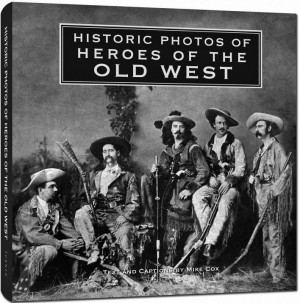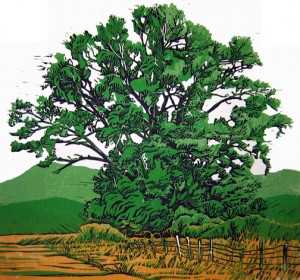This November Salida residents will be given an opportunity to vote on a bond which would allow for the construction of a new high school.
School bond 3A would approve a $17.9 million bond, payable over 20 years, which would qualify the school district for a $12.5 million B.E.S.T. grant to build a new high school.
B.E.S.T., which stands for Building Excellent Schools Today, is awarded by the Colorado School Capital Fund. The grant would pay 41% of the projected costs of a new high school with the remaining 59% covered through the grant. The Salida school board underwent a three-year process, three independent assessments of the existing high school which included lighting, security, ventilation and CO2 tests, and discovered it had some of the worst deficits in the state.They created a facilities committee to develop a plan to make improvements to the existing facility, but, citing increased maintenance costs, decided they “can’t patch this building any longer,” according to board member Lezlie Burkley. They then applied for and were awarded 100% of the grant money requested.
Board members asked facility engineers and architects to consider the possibility of repairing and renovating the existing facilities. They determined it would be less expensive to build a new school and demolish the existing facilities. They are also looking at future maintenance and utility costs and hope to build the new school to LEED (Leadership in Energy and Environmental Design) Gold certification, the highest rating available. The school district has hired the architectural firm The Blythe Group based in Grand Junction to design the plans for the new facility. The firm is currently involved in several school projects in Gunnison County including the recent remodel of Gunnison High School and the current remodel of and addition to the Crested Butte K-12 Community school. Architect Roy Blythe hopes to keep residents involved in the design phase of the new school, hoping “to get reactions as to what you like and don’t like,” he said in August at a public meeting on the bond issue. Although the new proposed high school will see a decrease in square footage of 22%, from 126,035 to 98,181, they want to incorporate the concept of “flexible classrooms” which would allow multiple teacher access to a variety of classrooms, increasing the actual usage of each room during school sessions. Teachers would have specific preparation areas, allowing them to keep learning materials in secure locations and have a private space for creating lesson plans. The new high school will also use a modular design, allowing for future expansion of the facility as the need arises.
Plans also call for the renovation of the existing Kesner Building which, built in 1922, is on the State Register of Historic Properties and will be the only original structure remaining intact. It will be used for administration offices and possible additional classroom space. The current football field will also remain in place. Planners envision construction of the new school on the site of the existing track, avoiding the need to purchase additional land and also allow for the seamless construction of the new school without interruption of classes at the existing school. Once students begin classes in the new facility, the old school will be demolished. If the bond passes, the projected date of completion for the new school is August to September of 2012.
So, what does this mean to the average Salida taxpayer? If passed, the bond will increase property taxes on residential structures by $4.44 monthly per $100,000 in market value. A home valued at $200,000 would see a property tax increase of $106.56 per year. Commercial buildings, on the other hand, will see an increase of $16.00 per $100,000 in value based on a state tax formula that cannot be overridden. Market value is determined by the assessor’s actual value x .0796 assessment rate x .0067. Salida properties are up for reassessment in 2011, and property owners can expect the increase based on the new assessments that same year. The mill levy will expire after the 20 year repayment period.
In 2008, the Gunnison school district was facing deteriorating schools and an economic climate that was not conducive to tax increases, yet they managed to persuade voters to pass a bond which allowed for the repair, renovation, expansion and remodel of several schools in that district. They were concerned that the improvements would cost more down the road and were very concerned with the immediate impact on students and teachers of deteriorating building conditions.
Dr. Terri Wenzlaff, Associate Vice President for Graduate Studies and Professor of Education at Western State College (WSC) was the co-chair of the Gunnison School Board, along with MJ Vosburg of Crested Butte. They formed a committee to help pass the school bond made up of teachers, parents and other community members. The bond issue was endorsed by WSC, Crested Butte Mountain Resort and the Gunnison Country Times, among others. They did fundraising and community outreach, talking to groups such as the Rotary, Elks, the Gunnison Chamber, The League of Women Voters, AARP – all in all nearly 30 presentations. According to Wenzlaff, they ran newspaper and radio ads and employed yard signs and buttons on behalf of the bond issue. She told how all the yard signs were coordinated to go up on same day which made a huge impact on public awareness. But it was not an easy task. They had some difficulty with retired people on fixed incomes and the fact that a large percentage of homeowners in Gunnison County do not actually live there. But in the end, the $55 million bond passed with 62 percent of the vote. “Gunnison community is very supportive of its kids and its future,” said Wenzlaff, and in early September of this year a ribbon-cutting was held at the newly remodeled Gunnison High School.
The Salida bond 3A is expected to face some opposition from retirees on fixed incomes and commercial property owners due to the current economic climate, but supporters say that if they don’t do this now, there will not be any money down the line to build a new high school or even to make repairs on the existing one. Many community members, including business owners and realtors, cite the value of a new high school for the community, from recruitment of quality teachers to increased numbers of young families relocating to the area. “Education is the absolute foundation of a community,” said Salida Chamber Director John Englebrecht.
— By Mike Rosso


